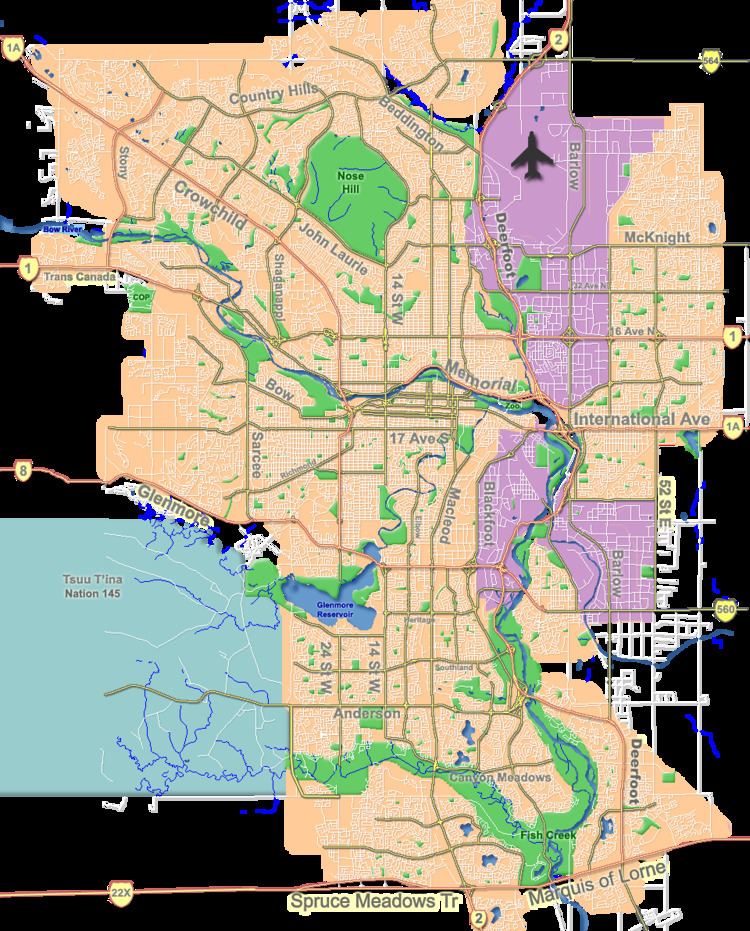Quadrant SW Established 1983 Elevation 1,205 m Population 4,141 (2006) | Ward 6 Annexed 1956 Local time Friday 1:11 PM | |
 | ||
Weather 7°C, Wind S at 11 km/h, 39% Humidity | ||
Patterson Heights is a residential neighbourhood in the south-west quadrant of Calgary, Alberta. It is bounded by Sarcee Trail to the east and north, Bow Trail to the south, 69 Street to the west and Old Banff Coach Road to the south. Edworthy Park, developed in the Bow River valley, borders the community to the north and east across Sarcee Trail.
Contents
Map of Patterson, Calgary, AB, Canada
It is represented in the Calgary City Council by the Ward 6 councillor.
History
Before annexation, the area consisted of mostly acreages. It was named after the Patterson family, who owned much of the land. Prior to that, it was known as Broadcast Hill, for the 250 m (820 ft) CFCN re-transmission tower located here.
Originally, the University of Alberta was to be located on the site of the present day community; however, Edmonton was ultimately chosen as the site of the campus.
The lands were annexed to the city of Calgary in 1956 and Patterson Heights was established as a neighbourhood in 1983. During the planning phase, in the early 1980s, Patterson Heights was referred to as Strathcona Cell "A".
During the XV Olympic Winter Games in 1988, the Broadcast Hill Media Village was located in Patterson Heights. The apartments have since been converted into condominiums.
Demographics
In the City of Calgary's 2012 municipal census, Patterson had a population of 7003428100000000000♠4,281 living in 7003200800000000000♠2,008 dwellings, a 2.9% increase from its 2011 population of 7003416200000000000♠4,162. With a land area of 2 km2 (0.77 sq mi), it had a population density of 2,100/km2 (5,500/sq mi) in 2012.
Residents in this community had a median household income of $78,786 in 2000, and there were 8.9% low income residents living in the neighbourhood. As of 2000, 23.8% of the residents were immigrants. A proportion of 28.8% of the buildings were condominiums or apartments, and 23% of the housing was used for renting.
